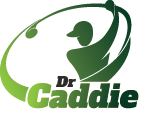You can expect to see noticeable improvement in about six months by focusing on fundamentals like grip, stance, and swing mechanics with regular practice. Building consistency and breaking 100 usually takes up to a year. Incorporating professional coaching and tracking your progress accelerates growth.
Mastering key skills like driving accuracy and the short game is essential. If you keep refining your approach with effective practice strategies, you’ll continue advancing your golf game steadily.
- Key Takeaways
- Typical Timeline for Golf Skill Development
- Ideal Practice Frequency and Session Structure
- Importance of Professional Coaching and Data Tracking
- Key Golf Skills That Impact Performance
- Effective Motor Learning Techniques for Golfers
- Special Considerations for Junior Golfers
- Frequently Asked Questions
- Make Every Round Count With Data-Driven Golf Training
Key Takeaways
- Beginners typically spend 6 months mastering fundamentals like grip, stance, and consistent contact before completing full 18-hole rounds.
- Regular practice, about three times weekly for 30-90 minutes, is essential to build consistency and improve accuracy effectively.
- Developing a reliable short game and putting skills, which account for most scoring, is crucial within the first year.
- Working with certified coaches and using data tracking tools accelerates skill development and provides tailored feedback.
- Achieving consistent under-100 scores commonly takes 6 months to a year, with further progress requiring ongoing practice and motor learning strategies.
Typical Timeline for Golf Skill Development
Although mastering golf takes time, you can expect clear progress if you follow a structured timeline for skill development.
Mastering golf requires patience, but clear progress comes with a structured skill development timeline.
In the first six months, you’ll focus on fundamentals like grip, stance, and swing mechanics, aiming to make consistent solid contact and complete your first full 18-hole round. You’ll also learn the basics of different clubs and their uses. Selecting the right grip size for your hands during this phase can significantly enhance your control and comfort.
Between six months and a year, your focus shifts to building consistency, hitting more fairways and greens with better accuracy, breaking 100 consistently, and improving course management. Regular practice frequency during this time is crucial to solidify these skills and see noticeable improvement.
This period solidifies your full swing and overall rhythm, laying a strong foundation. By understanding this typical progression, you can set realistic expectations and stay motivated as your skills steadily improve.
Ideal Practice Frequency and Session Structure
To see meaningful improvement in your golf game, you need to practice regularly and with purpose. Aim for about three focused sessions weekly, each lasting 30 to 90 minutes, balancing intensity with recovery to avoid burnout.
Incorporating range, putting green, and chipping green practice will help develop all aspects of your game, ensuring comprehensive improvement during each session. Playing at a consistent pace and managing your practice time efficiently can help simulate real round conditions and improve overall performance.
Structure your practice to cover putting, chipping, and driving range work. Dedicate roughly 40% of your time to putting, given its critical role in scoring. Use themed practice days like “short game” or “long game” to maintain variety and target all skills thoroughly.
Incorporate drills that simulate pressure and rotate locations to expose weaknesses. Regularly video your swing and use a launch monitor to track progress and make data-driven adjustments. Consistency beats sporadic efforts, so adapt your schedule based on progress and availability. Maintaining an appropriate practice frequency aligned with your skill level helps optimize improvement while preventing fatigue.
Importance of Professional Coaching and Data Tracking
When you engage with a certified professional golf coach, you tap into expertise that considerably accelerates your skill development.
Certified instructors bring proven teaching skills and credibility, boosting your motivation and lesson effectiveness. They often integrate technology, enabling objective data tracking to pinpoint areas needing improvement. In fact, approximately 64% of core golfers watch online golf instruction content, showing the growing role of digital tools in learning. Many certified pros also incorporate video analysis technology to provide precise feedback on your swing mechanics.
This combination fosters faster, more targeted progress. Consider these benefits of professional coaching with data tracking:
- Access to tournament-level expertise and structured guidance
- Use of automated performance analysis for precise feedback
- Enhanced trust and engagement through certified instructors
- Data-driven coaching interventions tailored to your unique needs
Embracing professional coaching and data tools ensures you invest your time wisely. This makes your journey to golfing proficiency more efficient and rewarding.
Key Golf Skills That Impact Performance
You really need to prioritize driving accuracy. I mean, think about it—setting up each hole with a precise tee shot can make a huge difference in your scoring potential. It’s all about giving yourself the best chance to play well, right? Positioning the ball more forward in your stance and tilting your shoulders away from the target can help maximize contact and distance through proper setup, improving your tee shot consistency.
But don’t forget about your short game! Sharpening your precision in chipping and putting can really lower your scores. When you can convert more opportunities around the green, it’s like magic for your game.
Driving Accuracy Importance
Driving accuracy measures how often you hit fairways off the tee, helping you avoid rough, hazards, and tough recovery shots. Proper club organization and weight distribution in your golf bag can also contribute to better swing consistency. While PGA pros hit about 47% of fairways, LPGA players average over 70%, showing its situational value.
Accuracy’s importance depends on hole type, course layout, and skill level, especially critical on tight, hazard-lined courses and for higher handicappers. Notably, courses that favour longer hitters often do not favour more accurate players, reflecting a typical inverse relationship.
Consider these key points:
- Accuracy reduces penalty risks and stabilizes scores.
- More crucial on par 4s and for younger players.
- Less predictive of pro earnings than distance but vital for amateurs.
- Advances in tech favor distance, but accuracy aids recovery challenges.
Mastering driving accuracy enhances your consistency and scoring potential.
Short Game Precision
Why does short game precision hold such a pivotal role in lowering your golf scores? Up to 65% of your shots from within 50 yards land on the green, making chipping and putting essential for saving par.
Mastering chip shots, aiming for a 6° launch angle and controlled spin, boosts your ability to get up and down consistently. Inside 25 yards, scratch golfers get up and down 56% of the time, showcasing the importance of short game precision. Improving your scrambling can dramatically cut strokes, as even pros succeed over 70% of the time around the green.
By focusing practice on shot distance control and feedback, you’ll develop accuracy that surpasses driving precision improvements. Using stroke index data to identify challenging holes can help tailor your short game practice to the most impactful situations. Use varied practice conditions to simulate course challenges and track your progress with measurable goals.
Prioritizing your short game is the fastest, most effective path to lowering your scores and elevating your overall performance.
Effective Motor Learning Techniques for Golfers
Although mastering golf demands patience and persistence, adopting effective motor learning techniques can accelerate your progress considerably. Focusing externally on your shot rather than internal mechanics enhances skill learning.
Direct your attention to the shot outcome instead of your body movements to improve learning efficiency.
Incorporating varied, distributed practice rather than long, repetitive sessions improves retention and reduces fatigue. Embracing controlled errors within challenging practice conditions prepares you for real-course pressure. Visualizing shots and using pre-shot routines sharpen your perceptual-motor integration, boosting consistency.
To optimize your motor learning:
- Use random, varied practice to mimic actual play scenarios.
- Balance difficulty to match and challenge your skill level.
- Practice frequently in short sessions with rest intervals.
- Incorporate mental imagery and reflective review phases.
- Recognizing that motor learning improves perceptual systems and sensory acuity further supports these approaches.
- Additionally, maintaining a secure and comfortable grip using carpet tape can enhance control and confidence during practice.
These strategies ensure efficient skill acquisition and long-term improvement, helping you get good at golf faster.
Special Considerations for Junior Golfers
Because junior golfers face unique physical, developmental, and competitive challenges, tailoring training and expectations to their age and growth stages is essential.
Between ages 7 and 13, your body undergoes rapid changes, including growth spurts and puberty. This makes flexibility and strength training critical to avoid injury and improve performance, as these exercises also help maintain muscular strength and balance.
Focus on mastering fundamentals like swing mechanics and putting during this “Fundamentals” phase, leveraging your cognitive development.
Be aware that competition is intensifying, with many juniors starting early and progressing to elite levels by their teens. Tournament fields are larger and more competitive, attracting national and international talent.
Using structured programs like Operation 36 can help you track progress and set goals.
Frequently Asked Questions
How Does Golf Equipment Quality Affect Skill Development Speed?
High-quality, properly fitted golf equipment can speed up your skill development by making your shots more consistent and forgiving. When your clubs match your swing perfectly, you’ll notice immediate improvements in distance and accuracy, helping you build confidence faster.
However, equipment alone won’t make you better; you still need focused practice and coaching to truly improve. Use technology and custom fitting as tools to enhance your learning curve and maximize your progress.
What Are Common Mental Challenges Beginners Face in Golf?
You’ll encounter some mind hurdles as you start golf, like managing pressure when stakes are high, which can trip up your focus. You might notice your confidence wavers, especially with negative self-talk sneaking in, shaking your swing.
Anxiety and mental fatigue can cloud your judgment, particularly early in rounds. Lack of mental prep might leave you unready for real-game challenges. Embrace these hurdles; they’re normal and conquerable with practice.
How Does Weather Impact Golf Practice Effectiveness?
Weather impacts your golf practice by altering ball flight, distance, and course conditions. Cold temps reduce carry and spin, making shots less predictable, while heat increases ball compression and roll.
Wind challenges your shot accuracy and requires strategic adjustments. Rain slows greens and fairways, forcing you to adapt club choice and shot power. Practicing in varied weather builds your adaptability and sharpens your skills.
Embrace these conditions to improve your game effectively.
Can Diet and Physical Fitness Influence Golf Improvement?
Picture yourself as a finely tuned engine. Your diet and fitness are the fuel and maintenance that keep you running smoothly on the course. Yes, they considerably influence your golf improvement. Eating balanced carbs, proteins, and healthy fats fuels your focus and endurance.
Strength and cardio training boost your swing power and stamina. By combining smart nutrition with physical conditioning, you’ll sharpen your skills and sustain performance throughout those long rounds.
How Do Social Factors Affect Motivation to Improve in Golf?
Social factors strongly shape your motivation to improve in golf. When you have supportive friends or a strong golf community, you get encouragement and validation that boost your drive.
Being part of a club or social group can also spark healthy competition and status recognition, pushing you to practice more. Plus, socializing through golf enhances your enjoyment and self-esteem, keeping you engaged and motivated to develop your skills consistently.
Make Every Round Count With Data-Driven Golf Training
Getting good at golf isn’t an overnight sprint; it’s more like planting a seed and nurturing it patiently. With consistent practice, smart coaching, and focused skill-building, you’ll watch your game blossom over time.
Keep tracking your progress and applying effective motor learning techniques to sharpen your swing. Remember, every golfer’s journey is unique, but with dedication and the right approach, you’ll steadily transform your potential into performance on the course.
Keep swinging with purpose!

